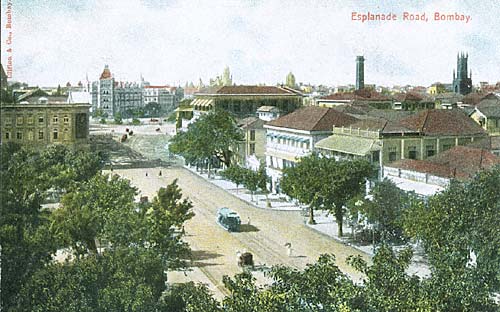
Figure 1. The Esplanade, Bombay 1857.Please click on this image and later ones for larger images. Bombay - The Esplanade and Colaba in the distance. March 1870 (from the top of Watson's Hotel).--Artist: Lester, John Frederick (1825-1915)-Date: 1871
Bombay - The Esplanade and Colaba in the distance. March 1870 (from the top of Watson's Hotel).--Artist: Lester, John Frederick (1825-1915)-Date: 1871
Marine Battalion, Esplanade. Lithograph of the Marine Battalion at the Esplanade by Jose M. Gonsalves (fl. 1826-c.1842). Plate 4 from his 'Lithographic Views of Bombay' published in Bombay in 1826. Gonsalves, thought to be of Goan origin, was one of the first artists to practice lithography in Bombay and specialised in topographical views of the city. In 1772, the English feared an attack on Bombay by the French and cleared a semi-circular area of land around the fort to provide a clear line of fire. This area was known as the Esplanade. In the southern section of this area, there was a parade ground known as Marine Lines. This view shows a battalion soldiers on parade with military bungalows in the background 
Photos of Bombay in 1857
........................................................................................
later views of Bombay esplanade

Esplanade Road, Bombay
Clifton & Co., Bombay, ~ 1905

DESCRIPTION
ABOUT VINTAGE PHOTOGRAPHY
Whence Realism ............ Period Photography in India.
Photography first made its inroads into India as early as the 1840`s. With this technology , representational accuracy could be ascertained for the first time. The, then British Government in India laid great emphasis on this development , as a method of documentation and precise determination .Landscapes , Archeological sites , Durbars , Princes , Ethnic Tribes and all came under the lens , photographed , documented and preserved for posterity. Not only the Colonial Masters , but Princes and common people became amateur and professional photographers . It was the " great innovation "of the 19th century. It`s effects touched Fine Art , Empire Building , humanities and cultural understanding . Distances started coming closer and realism came to be the order.
Samuel Bourne, Macfarlane , Edmund David Lyon , William Henry Pigou became the new pioneers of Indian Photography .Even Indian Princes such as Ram Singh of Jaipur became Amateur Photographers , while the Nizam and Udaipur had their own private photography studios . Raja Deen Dayal , became a Legend in Indian Photography , starting with his studios in Secundrabad and Indore. Taking the challenge photography placed in front of fine artists , they took to colouring portraits and landscape photographs blending the traditional with the modern.
With the coming of Digital Photography , the traditional forms have been phased out and they have moved to the realm of Art and collectible s. Major Museums all over the world are now collecting period photography.
Water-colour painting of Mumbai (Bombay) by John Frederick Lester (1825-1915), March 1870. This view shows the British military encampment in the foreground on the left, with the lighthouse, St John's Church, the band stand and the island of Colaba in the distance. The image is part of an album of 30 folios of watercolours made between 1865 and 1877 in Kathiawar, Bombay, Poona, Mahabaleshwar and Savantvadi State.
Originally, Mumbai was composed of seven islands separated by a marshy swamp. Its deep natural harbour led the Portuguese settlers of the 16th Century to call it Bom Bahia (the Good Bay). The British Crown acquired the islands in 1661 as part of the marriage dowry of Catherine of Braganza when she married Charles II. Mumbai was then presented to the East India Company in 1668. The second governor, Gerald Aungier, developed the town into a prosperous trading port and centre for commerce. As inducements were offered to skilled workers and traders to move here Mumbai soon became a bustling cosmopolitan city.
THE OLD WATSON HOTEL AS IT IS TODAY-2010:-







No comments:
Post a Comment